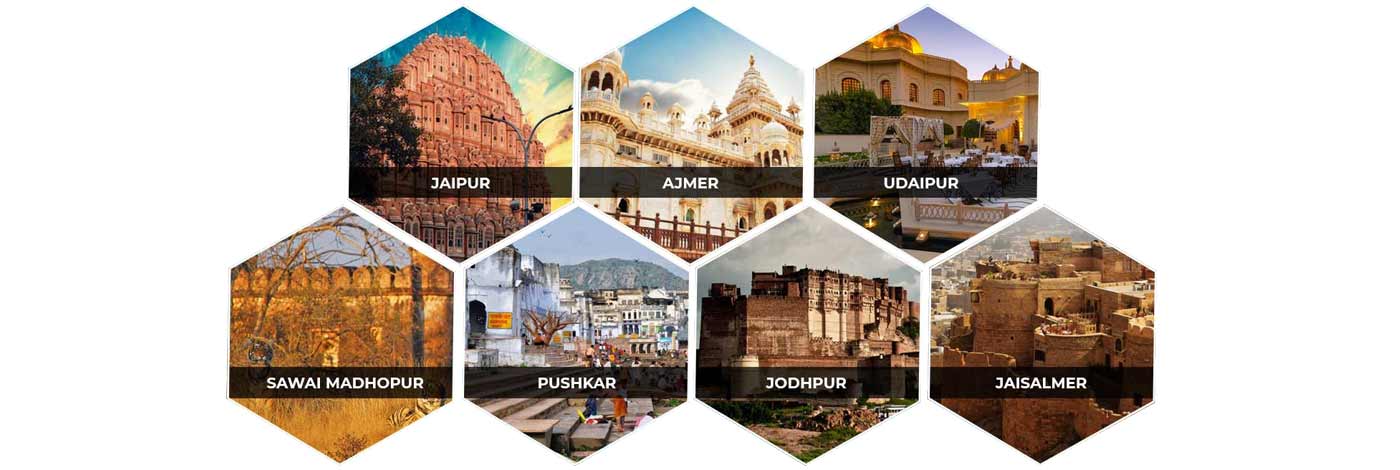
Nahargarh Fort Jaipur
Nahargharh Fort is situated on the ridge of Aravali. It looks most classy when floodlit at night. It was built in 1734 and extended in 1868. Nahargharh meaning abode of the tigers was built by Sawai Jai Singh to bolster the defence of Amber (Amber Fort). The fort overlooks the city and presents a glittering view of the city lights.
Nahargarh Fort is associated with several legends. Nahargarh offers exquisite vistas of the Man Sagar that boasts of a lovely duck blind right in its midst. The fort served as a rest retreat for royal guests and dignitaries who were invited to join the maharaja for duck shoots.The legend also have it that it was named Nahargharh after Nahar Singh whose spirit would destroy the construction of Nahargharh. So after a prayer to the spirit it agreed to leave on condition that the fort is named after him. Durg Cafeteria just above the entrance sells meals and refreshments, while Padao Restaurant on the west sells drinks around sunset.
The Nahargarh Fort was used as a retreat for the ladies of the royal household. In fact the Zenana deorhi or women's quarters at the Nahargarh Fort were built to impress. The royal quarters designed for women sprawls over the fourth courtyard. Known as the Madhavendra Bhawan the zenana was specially built by Maharaja Sawai Jai Singhji.
In all there are 12 palatial quarters replete with interlinked corridors, kitchens and hearths at the Nahargarh zenana - each a glorious depiction of Rajputana art and taste for luxury. The Madhavendra Bhawan, built by Sawai Ram Singh II has uniquely a cluster of 12 identical suits for queens and at the head is a suit for the king himself. The rooms are linked by corridors and retain some delicate frescos as well as toilets and kitchen hearths. It was used by members of the royal family for excursion in summers and is now even a favoured picnic spot.
History Of The Fort
Nahargarh Fort was built in 1734 by Maharaja Sawai Jai Singh II, founder of Jaipur, on the Aravalli hills, as a retreat place. Nahargarh Fort is connected to the Jaigarh Fort through its fortifications. It is believed that the construction of this fort was obstructed by the spirit of a Rathore prince, Nahar Singh Bhomia. However, the spirit was pacified when a temple dedicated to him was built inside the fort. Sawai Ram Singh renovated this fort in 1868.
Architectural Layout Of The Fort
The fort follows Indo-European architecture and there are many structures inside the fort. To the left of the entrance gate 'Tadigate', there is a temple dedicated to the deity of Jaipur rulers. Apart from this, there is another temple inside the fort, dedicated to the Rathore prince, Nahar Singh Bhomia. Another attraction in the fort is the 'Madhavendra Bhawan' built by Sawai Madho Singh. This is a two-storey building which has suites for the king and his twelve queens. It is divided into nine similar apartments and each of these apartments has a lobby, bedrooms, toilets, kitchen and store. Other structures inside the palace include Diwan-I-Aam, an open air enclosure where the king met the common men and listened to their problems and complaints.
Best Time to Visit
The best season to visit this wonderful city is during the winter months, from October till March. The maximum temperature is around 20-22 degrees, when the intensity of the scorching sun is at its lowest. The nights are cooler, with the temperature dropping to about 5 degrees, while the days are extremely pleasant, and you can enjoy every bit of the city's heritage beauty and take back a memorable experience.
How to Reach
The city is extremely well-connected to the other parts of the country and the world through a multitude of transportation modes. The domestic airport is at a distance of 7 km from the main city at Sanganer, while the international airport is at a distance of 10 km. The airport connects the city to the major metro cities across India and abroad. From the airport, you can hire a taxi or a bus and reach your desired destination in and around Jaipur.
If you'd like to travel by train, the railway station is at a distance of 5 km and is well connected to the main city. There are many trains which connect Jaipur with different cities across India. The city has three main railway junctions, the main station at Jaipur, one at Gandhinagar and the third one at Durgapur. From the railway station, you can take a bus, an auto rickshaw or hire a taxi and reach the main city. If you are an avid lover of comfort and luxury, then "Palace on Wheels", a luxurious train, is the right choice for you.
 +91 9549279999
+91 9549279999 
